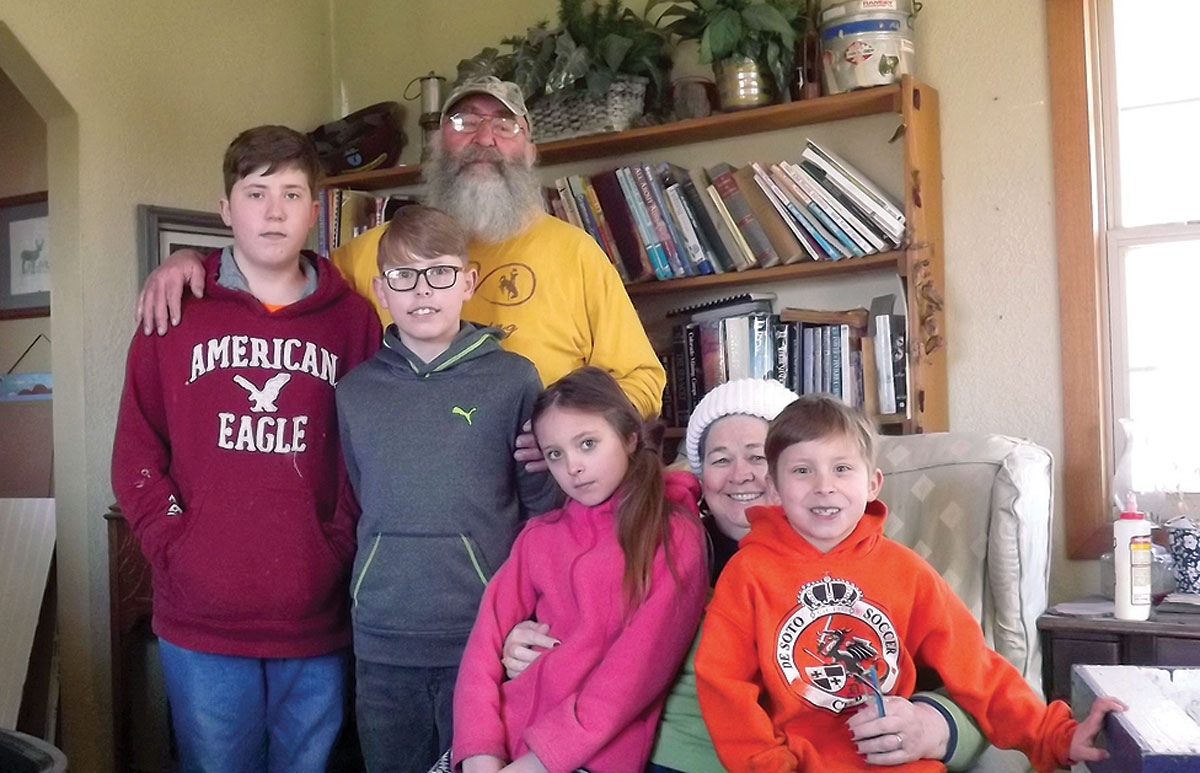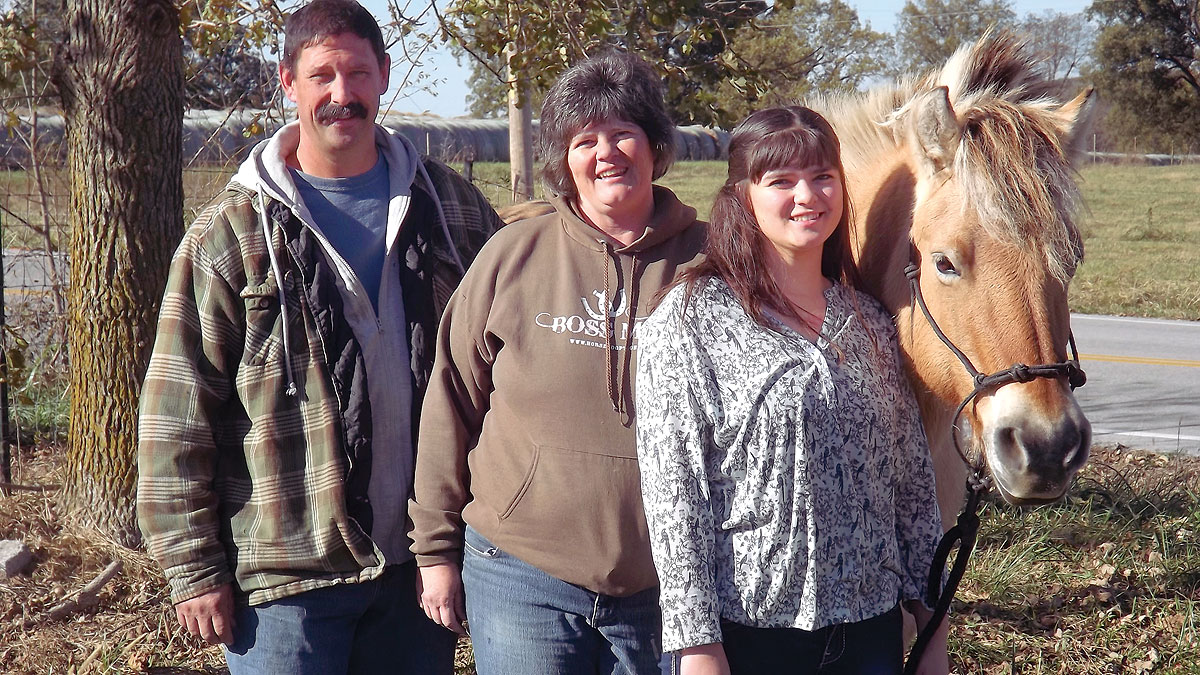 Why do Jerrod and Julie Ball of Exeter, Mo., raise Boer Meat Goats? “Because someone fell in love with the babies,” said Jerrod as he glanced over to his wife, Julie. But it is evident that the sweet kids are just one reason for using goats in farm diversification. The goats have also become an important 4-H project for their son, Jason, 11, who enjoys training and showing both doelings and meat wethers. Last year Jason and his older sister, Jessica, showed three doelings in several area shows.
Why do Jerrod and Julie Ball of Exeter, Mo., raise Boer Meat Goats? “Because someone fell in love with the babies,” said Jerrod as he glanced over to his wife, Julie. But it is evident that the sweet kids are just one reason for using goats in farm diversification. The goats have also become an important 4-H project for their son, Jason, 11, who enjoys training and showing both doelings and meat wethers. Last year Jason and his older sister, Jessica, showed three doelings in several area shows.
One advantage with goats is that they usually have at least two babies each, and are sufficiently able to feed and raise at least that many. But, bottle-feeding becomes necessary if the momma doesn’t bond properly with the kid, if she has more than two kids, or if one kid is stronger and more aggressive than the other. “Boers are one of the goat breeds that aren’t as good at mothering as some other breeds,” said Julie. “I have a total of three that are bottle-feeding, one because her brother is such a hog and she wasn’t getting as much milk.” The other two weren’t thriving because they didn’t bond with the mother. Julie’s bottle-fed babies are healthy and growing, and look just like the other kids in the herd. This year marks the third year they have had goats and Jerrod and Julie know a lot about their animals, but Julie admitted, “We’re just learning.”
Jerrod and Julie provide warm shelter and straw bedding for their kidding does. This year they have four does that kidded at nearly the same time. When the babies came in January the Balls kept them in the barn equipped with heat lamps. Once the weather warmed and the kids were stronger they were let out into the pasture area. The Balls have set up an area for creep-feeding the kids in the barn, which only they can access. The kids are started on the same ration as the older goats at just a few days old. Jerrod likes to use a meat goat feed that is 16 percent protein mixed 2:1 with a 12 percent beef sweet feed to bring the protein percentage down and cut costs. “They only recommend 12 to 14 percent protein for goat feed,” said Jerrod who feeds them once daily in the evening.
Jerrod and Julie have learned about meat goat farming by talking to other producers and going to goat workshops. They are members of the American Boer Goat Association (ABGA), who host workshops to educate producers. Julie and son, Jason, recently attended a workshop that had sessions covering health and feeding, and also had classes for youth that Jason enjoyed. Julie is learning deworming methods that only treat goats with active worm infestations. The Balls have kept their herd healthy and parasite free by keeping stress levels low, but worms can become an issue very quickly in meat goats. Learning how to conduct their own fecal egg counts and using FAMACHA internal parasite monitoring are two strategies that she hopes will help them medicate accurately without adding to the already growing problem of drug resistant parasites. “I feel safer going off information from the Extension Service or the ABGA,” Julie said, when referring to finding resources for goat health information. “You can find lots of stuff online, but the information may be wrong, or might be different regionally.”
Boer meat goats are the standard breed when it comes to commercial goat farming. This muscular meat goat is a good choice if the stock is going to be sold at the goat sale held at the Diamond Livestock Market. “As long as it has a red face and looks like a Boer it is going to bring a higher price,” said Jerrod of the desired breed characteristics. Jerrod and Julie are working to bring their herd into registered status. They explained that as long as the buck is registered at 100 percent Boer, the doe’s offspring can be registered as percentage does. They are interested in producing quality animals that will bring a good price at market and carry on good characteristics (while culling out bad genetics). Last year they purchased their first buck. He came from R & C Dapple Boers in Mulberry, Kan. Julie researched his bloodline to help make the choice. The bucks Sire was “Loaded Like a Freight Train” and the Dam was “Tavia”. They will not get to see offspring of their buck until early summer when a late-bred doe will be kidding.
Fencing can be a tricky aspect of goat farming. Jerrod utilized his existing 5-strand barbed wire fence with woven wire, hoping that would be adequate. He soon had a problem with the goats sneaking under the wire, “We couldn’t keep them in until I strung a strand of barbed wire down low.” This works for most, although an occasional young goat will try to jump over any fence. Julie added that, “As soon as the mommas had babies and formed a herd, we haven’t had any problems with them staying inside the pasture.” Goats are good “herd” animals and will most usually stick together. Julie also commented on another benefit of the fencing, “Woven wire really slows down predators from getting into the pasture. Only a small dog could squeeze through those holes.”
The Balls plan on growing their herd to no more than 10 does. They also raise Holstein steers that they get as bottle calves, on the 10 acres they own by their home. Something they learned from attending the goat conference was that land can be maximally shared between goats and cattle without adversely affecting the land because they compete for different food sources (depending on pasture quality and terrain).
Jerrod and Julie Ball will continue to learn as their herd grows, and enjoy the sweet, docile personality of their Boer goats.







